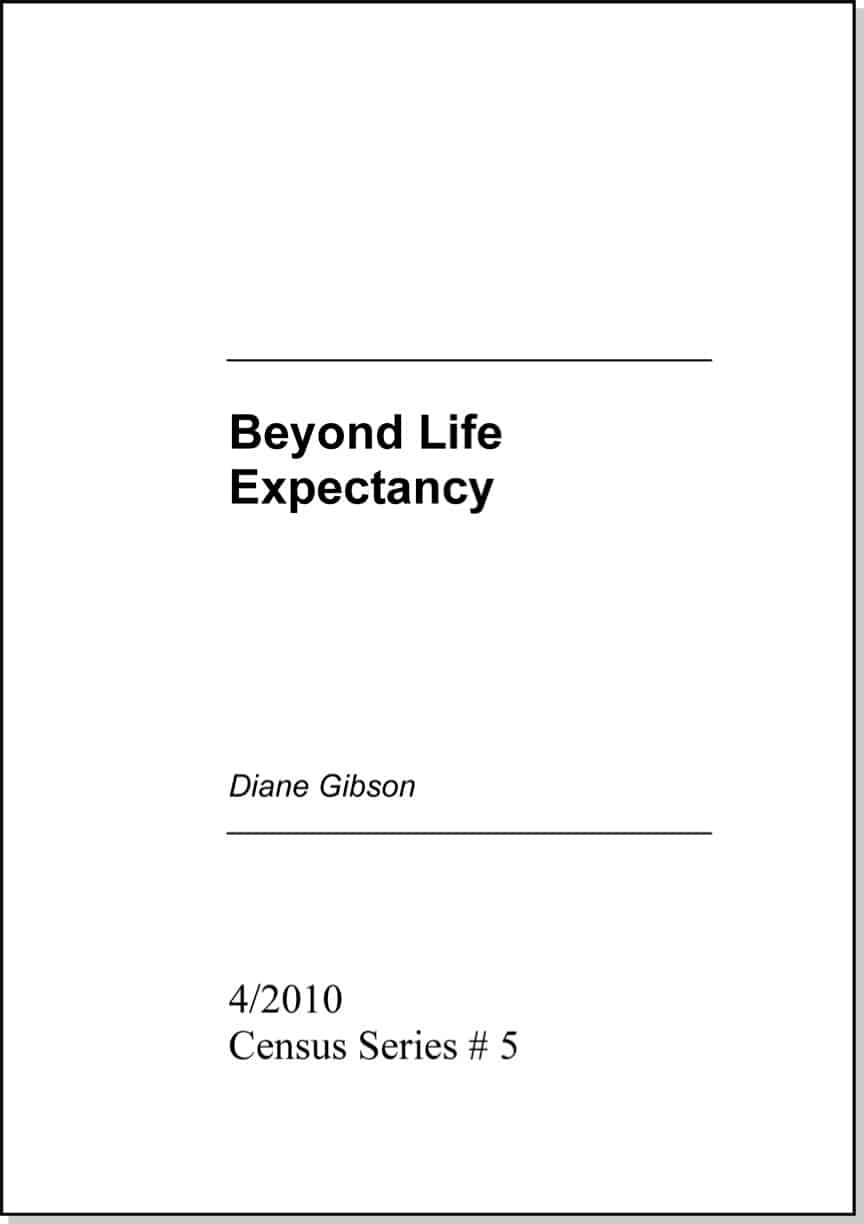 There has been a lot of media attention on the potential impact of an ageing population on all aspects of our society, workplaces included. In terms of OHS, there may be an increased risk of injury as people are encouraged to work longer and past the compulsory retirement age of around 60 to 65. But it is worth looking beyond the newspaper reports to get a better understanding 0f the level of risk presented by current population trends.
There has been a lot of media attention on the potential impact of an ageing population on all aspects of our society, workplaces included. In terms of OHS, there may be an increased risk of injury as people are encouraged to work longer and past the compulsory retirement age of around 60 to 65. But it is worth looking beyond the newspaper reports to get a better understanding 0f the level of risk presented by current population trends.
A report by Professor Diane Gibson for the Academy of Social Sciences in Australia is a terrific way to begin to comprehend the reality of the risk. The report, Beyond life expectancy, was released in May 2010 and provides an interpretation of the 2006 Australian Census data. From a cursory scan of the contents there are important facts that challenge us, particularly if we manage, in any way, people in the workplace.
For instance, we often use ourselves as a template for how we perceive others. I know that not everyone is a fat, middle-aged balding man with a university education like myself but that is the template I start from when I meet someone for the first time. In terms of education Professor Gibson’s report notes that
“Among men aged 25 to 59, 22% hold a Bachelors degree or higher qualification, and for women the figure is 26%. With each decade the 80 and over population will become progressively better educated.”
The age range for a Bachelor degree is wide but the trend in increasing educational qualifications is useful when considering the literacy levels of the workforce.
If one’s workplace is a volunteer organisation, OHS has sometimes been problematic and the new Australian OHS model law specifically includes volunteer workers. So the following is important to know:
“The level of engagement in volunteer work is quite high among older people generally. Around a quarter (23%) of 60-79 year olds are involved in volunteer work, and a surprising one in every ten people aged 80 and over (11%) are still engaged in volunteer work.”
It is likely that OHS for older workers will gain great attention over the next few years as the OHS legislation is rolled out and those already working in this sector may get additional OHS resources.
Professor Gibson reminds us that by facing the challenges of the ageing population now, we will be preparing the ground for our own old age. The entire report is well worth reading, even if one’s office chair is a rocker.
Gibson concludes her report with a paragraph that touches on many of the elements that are becoming important in workplace and OHS management:
“Even another decade may see dramatic improvements in our ability to ameliorate the consequences of the diseases of old age, perhaps aided by pharmaceutical or technological breakthroughs, perhaps by changes to the broad way in which society functions, the adoption of principles of universal design in our living and working environments, changes to our transport systems or even something as ‘simple’ as actually implementing the lifestyle changes (regular exercise, sensible diet) that we already know would make a substantial difference. Another forty years will see many changes. All of us who intend to be the 80 and overs of the future have a significant stake in helping to create the very best society we can for an ageing population; the alternative scenario, after all, is not particularly good.”

Well said, Kevin. Might I add that, as one ages, body parts inevitably fail, I am please to say that my mind is still (may be even sharper!) than it was when I was in my prime, however the body needs a lot of maintenance and adjustments have to be made.
There are few of us (at any age) who could stand and bend continuously (conveyor belt production for example) for hours on end at any stage of our life, but people are expected to do it. A friend of my daughter, works in the gaming industry and every 1 hour 50 minutes, he is allowed a 20 minute break. He stands in one location and bends just under 20% and he (and others) tire and welcome the breaks. This industry has done its homework and are applying sensible controls.
One would hope that this would flow on to other industries
Sheryl Dell